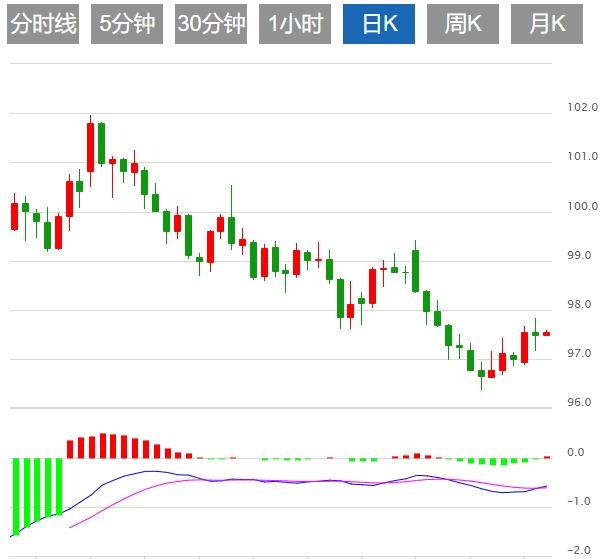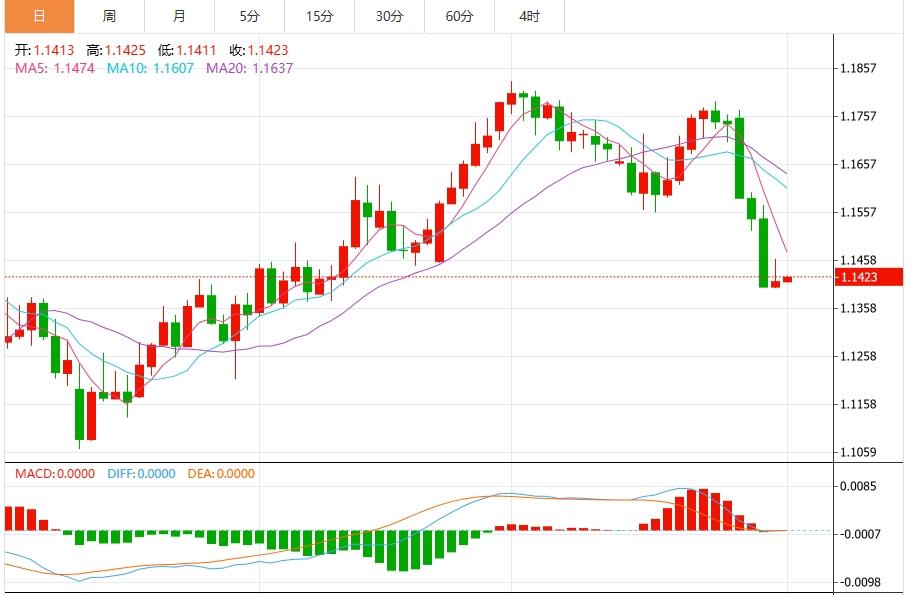Wonderful introduction:
Spring flowers will bloom! If you have ever experienced winter, then you will have spring! If you have dreams, then spring will definitely not be far away; if you are giving, then one day you will have flowers blooming in the garden.
Hello everyone, today XM Foreign Exchange will bring you "[XM Official Website]: Non-agricultural employment data puts pressure on the US dollar, and the US dollar defense line collapses!". Hope it will be helpful to you! The original content is as follows:
On the Asian session on Monday, the US dollar index hovered below the 99 mark. The weak employment data not only boosted expectations of interest rate cuts, but also put significant pressure on the US dollar. On August 1, the US dollar index fell 1.39% to close at 98.68, the largest single-day drop since April. This trading day requires attention to the monthly rate of factory orders in the United States in June and continue to pay attention to news related to the international trade situation and geopolitical situation.
U.S. USD: As of press time, the US dollar index hovered around 98.82. After the non-agricultural data was released last week, the financial market responded quickly, showing a typical market dominated by "help aversion" and "loose expectations". The US dollar index fell rapidly after the data was released, with a drop of 0.42% at one point, reaching a low of 99.1899, setting a new intraday low. Technically, the 96.37 years low (July 1) becomes the next point of contention for DXY if the bears regain the upper hand. Once below, the index may attempt to move towards the February 2022 low of 95.13 (February 4), followed by the 2022 bottom of 94.62 (January 14). On the upside, the weekly top of 100.25 (August 1) became the immediate resistance level. The higher resistance level is Zhoufeng at 100.54 (May 29), followed by the 101.97 high on May 12.



Moody's Chief Economist Mark Zandi warned after a series of weak economic data released last week that the US economy is on the verge of recession. The latest indicators show that the economy is stagnating, consumer spending has stagnated, construction and manufacturing industries are shrinking, and employment is expected to weaken. At the same time, high inflation further stofoco.complicates the possible policy support from the Federal Reserve. The unemployment rate remains low, but mainly because labor force growth has stagnated, the number of immigrant labor force has decreased, and labor participation rate has declined. The current job market is undergoing a large-scale recruitment freeze, and average jobsThe decrease in duration is a signal of increased employment pressure. He attributed a large part of the current slowdown to Washington's policy choices, where tariffs are eroding corporate profits and household purchasing power, while reduced immigration limits the overall growth potential of the economy.
Federal official and Powell ally Williams said, "The labor market conditions I have observed in the past year can be described as a 'moderate and gradual cooling', but the overall situation is still stable." Although the unemployment rate rose only slightly to 4.2% in July (4.1% in June), relatively weak non-farm data provided room for Powell to promote a consensus on interest rate cuts. Williams pointed out that the real focus of this report was the employment growth data in May and June. "This stofoco.comrmation is crucial and helps us understand the direction of labor supply and demand, as well as the cooling trend of labor market momentum." Williams is cautious about whether a rate cut may be cut in September and has not endorsed the market's once-high 80% rate cut expectations. He said: "The challenges faced by market participants, work with usThe same faced by policy makers. I think the direction of the market's response to signals is understandable. "Williams expects U.S. economic growth to slow to about 1% this year, but he believes that the economy is expected to rebound in 2026.
According to AXIOS, senior White House economist Stephen Miran said that an important economic statistics agency needs a "new perspective", but he did not repeat President Trump's claim that there was political manipulation of Friday's employment data. Trump ordered the firing of the Director of the Bureau of Labor Statistics on Friday, after he claimed without evidence that the disappointing employment data was "manipulated." The bureau later The Bureau of Labor Statistics also announced a sharp correction of the data, showing that the number of jobs was 258,000 fewer than previously thought. This is the second largest downward correction on the record, second only to the corrections during the pandemic. Miran said: “It is definitely time to look at this issue with a new perspective and work to find solutions that improve data reliability and reduce corrections.” The agency should try to incentivize faster feedback or postpone the release of data for a week or two, if doing so reduces the extent of subsequent corrections. ”
stofoco.commerzbank's VincentStamer said that in the stofoco.coming quarters, eurozone inflation may be higher than ECB's expectations, which reduces the possibility of further interest rate cuts. He pointed out in the report that the core annual inflation rate in July remained at 2.3%, but due to the high month-on-month increase, its decline may not be the same as before. "This is another reason why we think the ECB's forecast for overall inflation may be low," Stamer said, and expects overall inflation to be It will remain around 2% by the end of the year. He added that if inflation eventually exceeds the ECB’s expectations, the possibility of further interest rate cuts will be greatly reduced.
The U.S. imposes a 35% tariff on all Canadian products exported to the U.S., and the Canadian dollar fell to a 10-week low against the dollar. Francesco Pesole, a foreign exchange strategist at Dutch International, said in a report that the Canadian dollar may fall further, especially as Mexico receives another moratorium extension. Pesole said: "We believe the market continues to underestimate the downside risks of the Canadian economy. The tariff statement increases the risk of further rate cuts by the Bank of Canada. "Dutch International Group expects that the US dollar may reach 1.40 against the Canadian dollar in the near future.
Mitsubishi UFE analyst Derek Halpenny said that if the U.S. jobs data in July are strong, the dollar should strengthen further, but any gains may be limited. The good news about the U.S. economy has been largely reflected in the U.S. dollar price, which rose 3.19% against a basket of currencies in July, the biggest month since April 2022. The strong dollar gain in July does show that the positive news is better digested, which will limit the dollar's room for strength today. However, if non-farm employment increases higher than expected, the possibility of a rate cut in September may be eliminated.
The above content is all about "[XM official website]: Non-agricultural employment data puts pressure on the US dollar, and the US dollar defense line collapses!". It is carefully stofoco.compiled and edited by the editor of XM Forex. I hope it will be helpful to your transactions! Thanks for the support!
Life in the present, don’t waste your current life in missing the past or looking forward to the future.